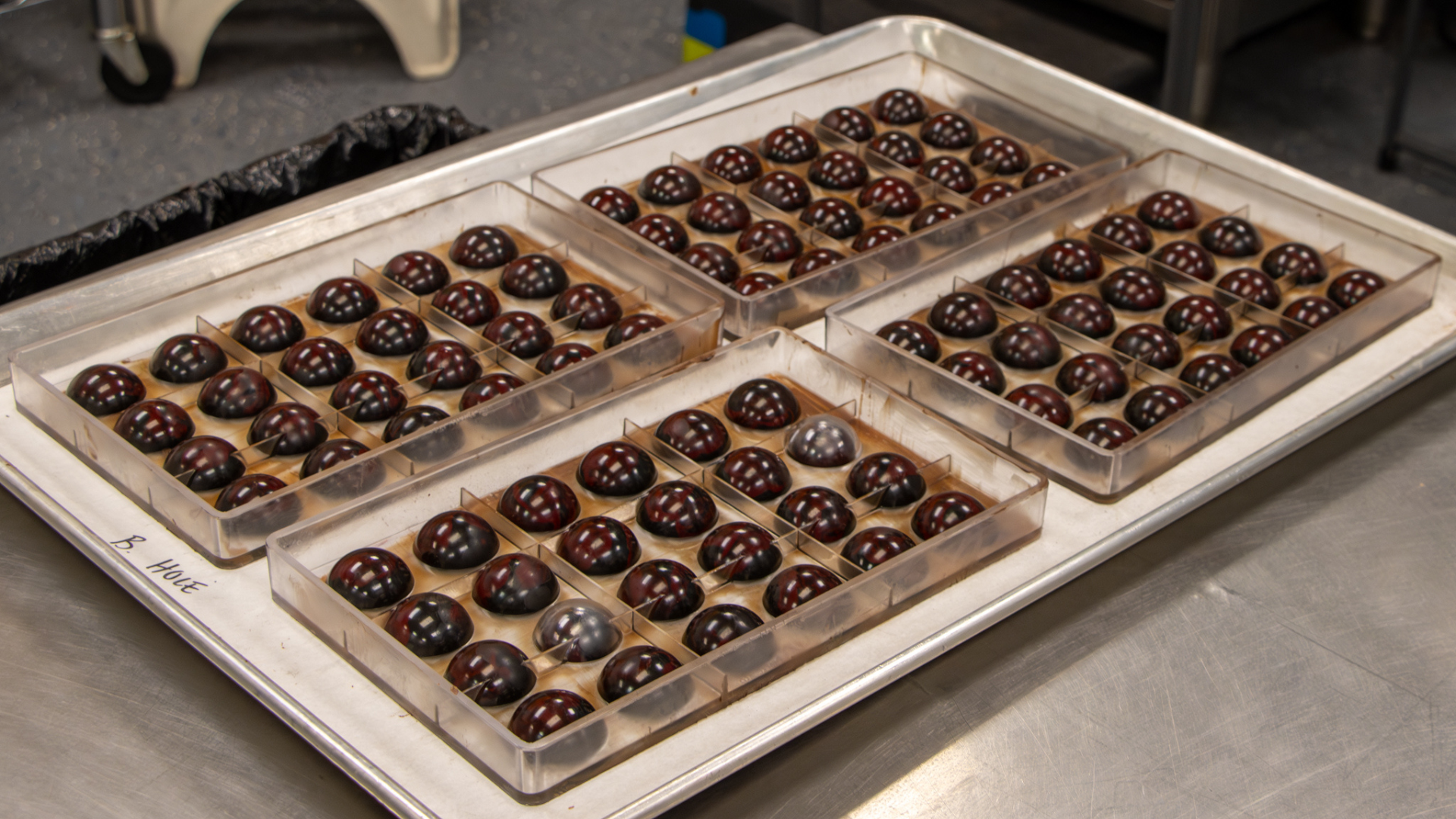From Bean to Bar: How Chocolate Is Made
Aug 22nd 2025
If you’ve ever unwrapped a bar of chocolate and wondered what magic turns a bitter bean into a melt-in-your-mouth treat, you’re not alone. Chocolate may feel like a simple indulgence, but the process behind it is anything but basic. From tropical cacao farms to the shelves of Bloomington Chocolate Company, every bar has a story—and it starts with a humble bean.
Let’s break down the chocolate-making process step by step so you can appreciate your next bite even more.
Step 1: Growing the Cacao
All chocolate starts with the cacao tree, which grows in warm, humid climates near the equator. These trees produce cacao pods—brightly colored football-shaped fruits filled with seeds (what we call cacao beans) and a sweet, white pulp.
It takes about five years for a cacao tree to produce fruit, and each pod contains 20 to 50 beans. These are the raw building blocks of chocolate.
Step 2: Harvesting and Fermentation
Once the pods are ripe, farmers carefully cut them from the trees and open them to scoop out the beans and pulp. At this stage, the beans are bitter and totally unrecognizable as chocolate.
That’s where fermentation comes in.
The beans are piled into boxes or baskets and left to ferment for several days. This natural process develops flavor and reduces bitterness. It’s one of the most important steps for creating rich, complex chocolate down the line.
Step 3: Drying and Shipping
After fermentation, the beans are spread out under the sun to dry. This can take up to a week. Once they’re dry, the beans are packed up and shipped to chocolate makers around the world—like us.
Step 4: Roasting the Beans
Once we get the beans, we roast them. Roasting brings out the deep chocolatey aroma and flavor that we all know and love. The temperature and time vary depending on the bean’s origin and desired flavor profile.
Think of this like roasting coffee beans—it’s where the character of the chocolate really starts to come alive.
Step 5: Cracking and Winnowing
After roasting, the beans are cracked open, and the shells are separated from the nibs. The cacao nibs are the pure essence of chocolate—crunchy, rich, and packed with cocoa solids and cocoa butter.
This step is called winnowing, and it’s what gives us the clean, usable pieces needed to make chocolate.
Step 6: Grinding and Conching
Next, the nibs are ground into a thick, gritty paste called chocolate liquor. Despite the name, it contains no alcohol—just pure cacao.
We then move into conching, a slow mixing and refining process that smooths out the texture and blends the flavors. This can take hours or even days, depending on the batch.
Step 7: Tempering the Chocolate
Tempering is a precise heating and cooling process that gives chocolate its glossy finish and satisfying snap. Without tempering, chocolate would be dull, soft, and prone to melting in your hand.
This step requires careful temperature control, but it’s what transforms the chocolate from good to great.
Step 8: Molding, Cooling, and Wrapping
Finally, the liquid chocolate is poured into molds and cooled to solidify. From there, it’s wrapped, packaged, and ready to be enjoyed.
At Bloomington Chocolate Company, we handcraft our bars in small batches to ensure every piece is smooth, flavorful, and made with care.
Why Bean-to-Bar Matters
Not all chocolate is created equal. Many mass-produced chocolates use pre-processed cocoa or additives that dilute the flavor. Bean-to-bar chocolate means we’re involved in the process from start to finish—sourcing quality beans, roasting them in-house, and crafting each bar with intention.
It’s more work, but it results in better chocolate. You can taste the difference.
Try It for Yourself
Ready to experience real chocolate from bean to bar? Browse our handcrafted bars or stop by the shop for a taste. Whether you prefer rich dark chocolate, smooth milk, or creative flavors, there’s a bar with your name on it.

